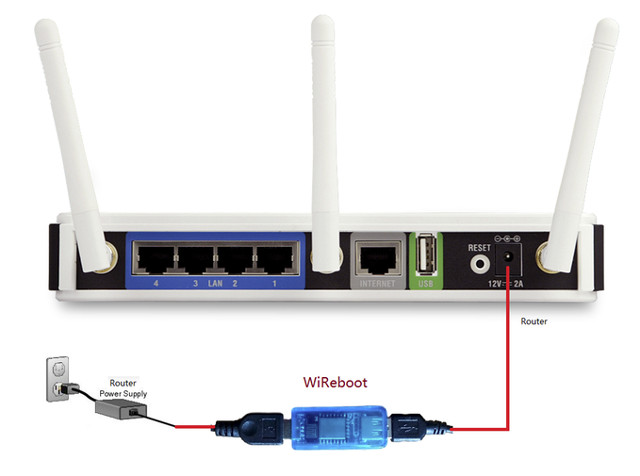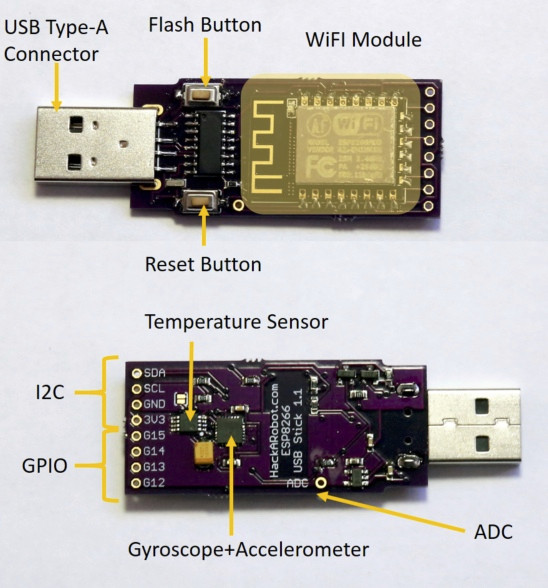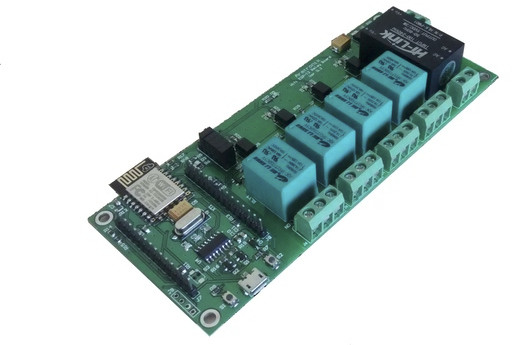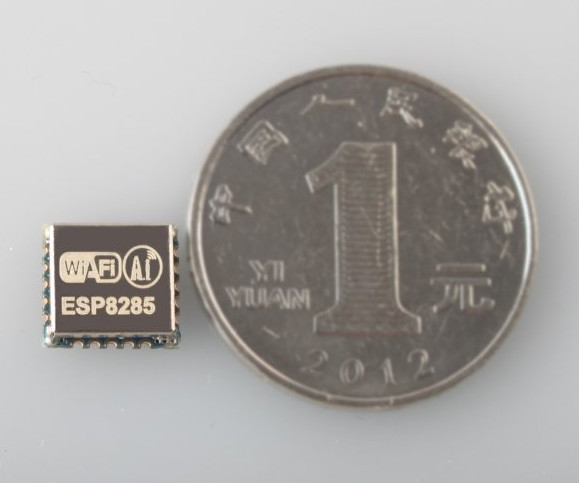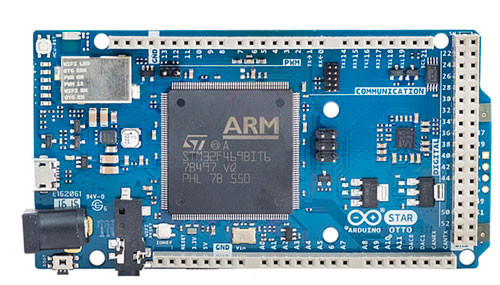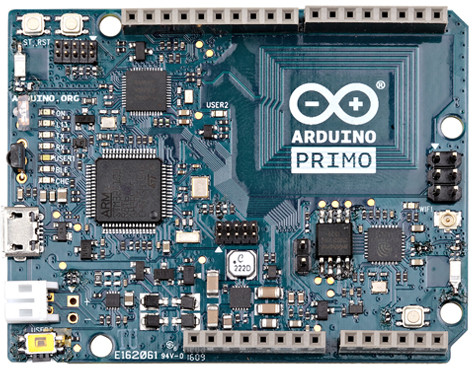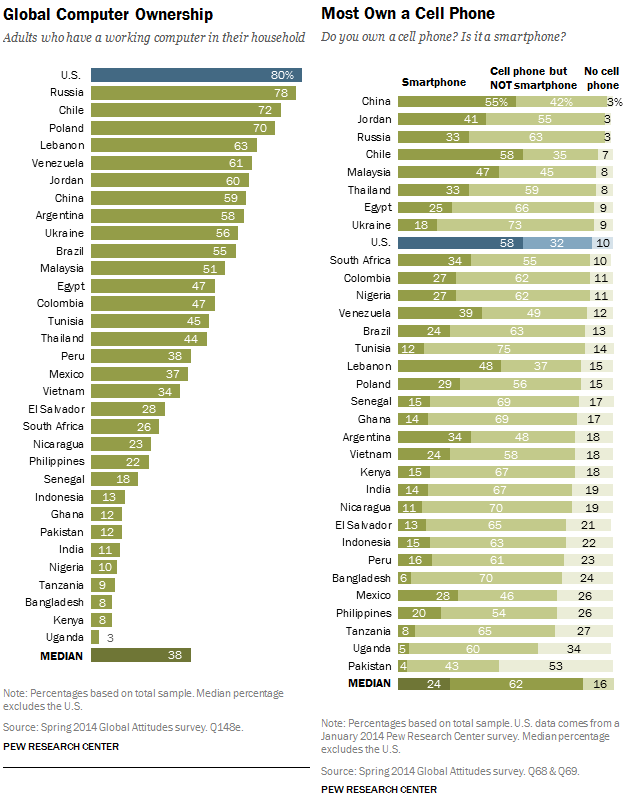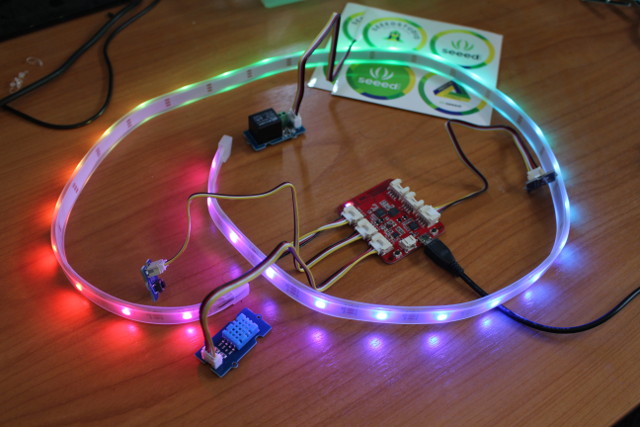Routers are usually pretty stable devices, but sometimes they still hang, and I think I must reboot my router about 2 to 3 times a year as I lose (Ethernet) connectivity. I’m usually at home, so it’s not really an issue as I can just walk a few meters to manually reboot the router. But if you are often on the go, and have a few WiFi devices such as smoker alarms, smart lights, and other home automation products that you may want to control over the Internet, if WiFi goes down nothing works. Luckily there’s a solution: WiReboot, a small device powered by ESP8266 that will check your WiFi and Internet connection, and automatically restart the router if it fails.Key features of WiReboot: ESP8266 module for 802.11 b/g/n WiFi connection USB – 1x USB input port to connect your router power supply, and 1x USB output to connect to […]
WiThumb is an ESP8266 WiFi USB Adapter with Motion and Temperature Sensors (Crowdfunding)
There are now plenty of Espressif ESP8266 boards or module to play with, but most of them require some cables or wires, at least for power. WiThumb does not need any of that as it’s designed to be plugged into any USB ports, and includes a 6-axis motion sensor, and a temperature sensor. WiThumb USB dongle specifications: SoC – Espressif ESP8266 32-bit MCU with 802.11b/g/n WiFi Storage – 4MB Flash memory Sensors – Temperature sensor (+/- 0.25C typical accuracy, -40 to 125 C range), 6-axis gyroscope + accelerometer Expansion – Breadboard friendly through holes with 1x 10-bit ADC, I2C and 4x GPIOs USB – USB type A connector Misc – Reset and flash buttons Power – 5V via USB port Dimensions – 4.8 x 2.2 cm The USB stick can be programmed like most ESP8266 board, i.e. via USB using the Arduino IDE. In case you wonder what kind of […]
Armtronix AC Powered WiFi Quad Relay Board is Powered by ESP8266 SoC (Crowdfunding)
Armtronix, an Indian startup, has come to kickstarter to launch a quad relay board with an AC terminal based on ESP8266, and the company also offer a complete kit allowing you to build your own wireless power strip with the board. WiFi quad relay board specifications: Wireless module – ESP8266 module 4x Relays to connect four AC/DC loads with terminals offering both MO and NC options “ModeMCU” headers to connect additional sensors such as PIR, IR, Temperature, Humidity, Limit switch etc. USB – micro USB port for programming. Misc – LEDs Power Supply – Terminal with 100-240V AC to 5V DC converter. Dimensions – 145 x 60 x 22 mm. The WiFi Quad Relay Board can be programmed as “MQTT Client” for networking/home automation integration using Arduino IDE, and controlled/ setup with a smartphone running a web browser. Some code is already available on the company’s github account. The crowdfunding […]
Espressif ESP8285 is just like ESP8266 but with 1MB built-in Flash, and Designed for Wearables
Espressif announced ESP8285 WiFi SoC was entering production last March. The new processor is based on ESP8266, but the company added 1MB built-in flash to make the solution smaller, and more suitable to wearables such as smartwatches and activity trackers. ESP8285 features a Tensilica L106 32-bit MCU and another ultra-low-power 16-bit RISC core, as well as 802.11 b/g/n/d/e/i/k/r WiFi connectivity. AI Thinker has already produced a tiny module based on the solution, called ESP-8285, and another person has developed an ESP8285 development board sold on Tindie for $24.95, and with some code sample (Arduino sketches) on Github. You’ll also find some more technical information on a Devacron blog post, or inside the datasheet on Espressif website. Via Hackaday Jean-Luc Aufranc (CNXSoft)Jean-Luc started CNX Software in 2010 as a part-time endeavor, before quitting his job as a software engineering manager, and starting to write daily news, and reviews full time later […]
STAR OTTO Arduino Board is Based on STMicro STM32 32-bit Cortex-M4 MCU & ESP8266 WiFi SoC
Thanks to STMDuino32 community, there was already support for the Arduino IDE on board based on STMicro STM32 ARM Cortex-M micro-controllers, but STMicroelectronics and Arduino Srl have introduced the STAR program to bring official support, and unveiled their first board with STAR OTTO Arduino board powered by STM32F469 Cortex M4 MCU at Maker Faire Bay Area 2016. Key features of STAR OTTO board (ARD-OTTO-STM32): MCU – STMicro STM32F469BIT6 ARM Cortex-M4 MCU @ 180 MHz with 2 MB Flash memory, 384 KB SRAM, Chrom-ART graphics accelerator System Memory – 16 MB SDRAM Storage – 128 KB EEPROM, microSD slot Connectivity – Wi-Fi 802.11b/g/n @ 2.4 GHz via Espressif ESP8266 Display I/F – MIPI DSI display interface Camera – Camera connector Audio – 2x MEMS digital microphones, headphone and speaker output USB – 1x micro USB host interface Expansion – Arduino Uno, Due, Mega connectors including 8x ADC, 2x DAC, 32 digital […]
Arduino Primo Board Supports WiFi, Bluetooth LE, and NFC
A couple of weeks after unveiling Arduino UNO WiFi with ESP8266 and Atmel AVR, Arduino Srl has introduced Arduino PRIMO board with Nordic Semi nRF52 MCU with Bluetooth Smart and NFC, ESP8266 for WiFi, and STM32 to handle GPIOs and USB UART during May Faire Bay Area 2016. Arduino Primo board (A000135) specifications: Service Micro-controller STMicro STM32F103R8T6 ARM Cortex-M3 MCU @ 72 MHz with 64KB flash, 20KB SRAM USB/Uart converter & CMSIS-DAP GPIO expander, IrDA Board power management Operating Voltage – 2.0 to 3.6 V Arduino Micro-controller Nordic nRF52832 ARM Cortex-M4F MCU @ 64 MHz with 512 KB flash, 64KB SRAM Analog I/O Pins – 6 + 1 DAC DC Current per I/O Pins – 7 mA Bluetooth Smart – Up to +4 dBm output power, -96 dBm sensitivity Other features – PDM interface, AES HW enc, NFC tag WiFi Micro-controller Espressif ESP8266 Tensilica Xtensa LX106 WiSoC @ 80 MHz […]
Programming ESP8266 Boards with a Smartphone
In recent days, I wrote about low cost MCU boards such as the $2 BluePill, and the One Dollar Board project, but several people commented that while the board themselves are very cheap, it might still be a problem in some developing countries, where access to computers cannot be taken for granted. So person suggested that such initiative would work better in some countries if programming was possible via a smartphone instead. Is that true? According to a 2014/2015 study by Pew Research Center, there is some truth to it, but it varies greatly between countries. For example, 55% of Brazilian adults own a computer at home, while only 24% own a smartphone, but in Kenya only 8% own a computer at home, while 15% own a smartphone. Some devices in the “cellphones but not smartphones” might be feature phones with WiFi and a web browser. Anyway ideally a low […]
Getting Started with Wio Link Starter Kit, Visual Programming Android App, and IFTTT
Wio Link is a board based on ESP8266 WiSoC that is supposed to be easy to set up thanks to Grove modules – no breadboard and mesh or wires – and, as I first understood it, to program thanks to a drag-and-drop mobile app that does not require any actual programming. More advanced users can also use a RESTful API in Python, JavaScript, Node.js, PHP, Objective-C or Java. I’ve been sent a $49 Wio Link Starter Kit including the board, a USB cable, and six Grove modules to evaluate the kit. I’ll start by having a look a the kit, before experimenting with the Wio Link Android app. Wio Link Starter Kit Unboxing The kit is sent in a red plastic case. Wio Link board is lodged in the top cover, and other accessories are placed in bags in the main part of the case. Let’s check the board first. […]


